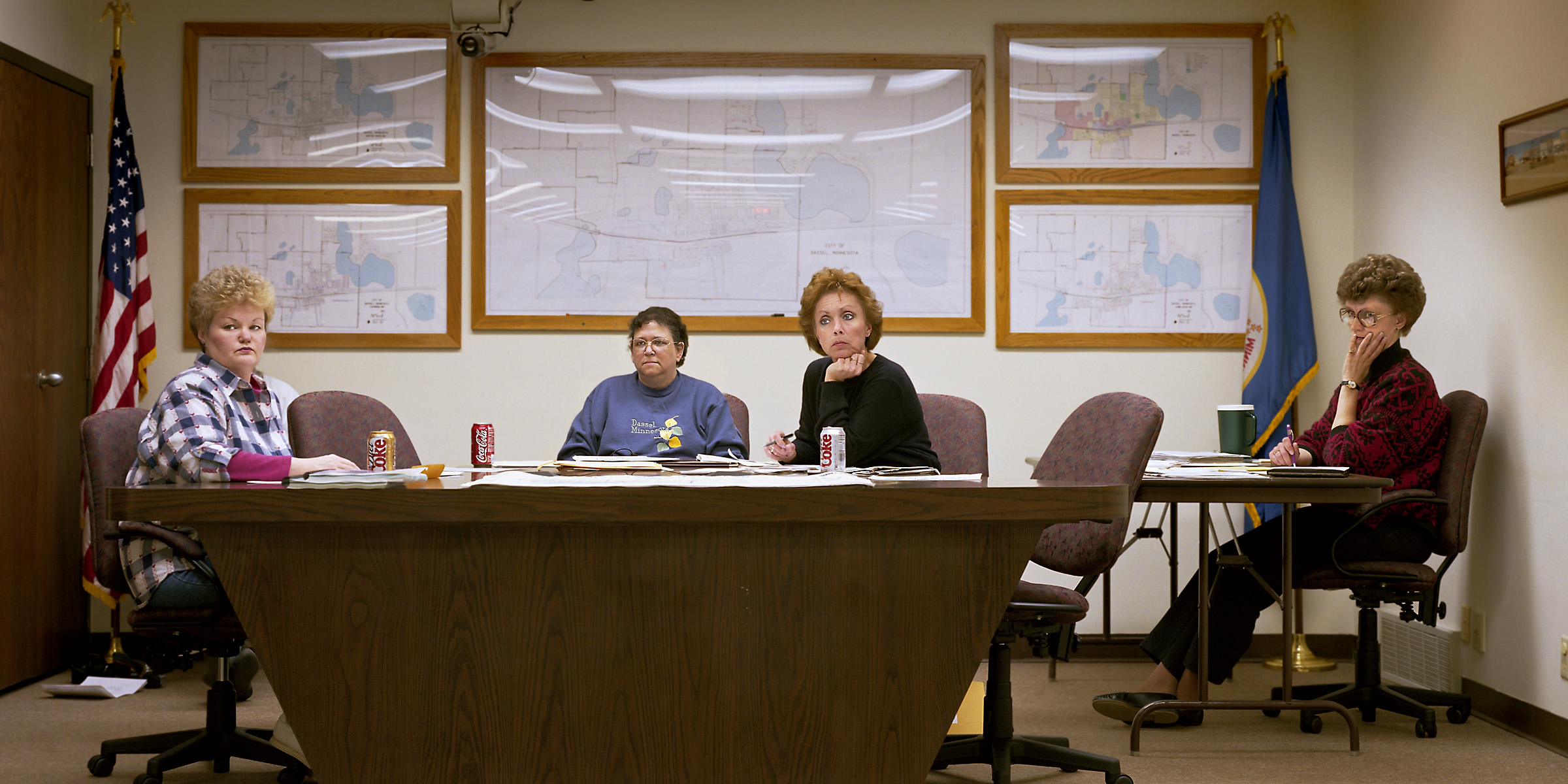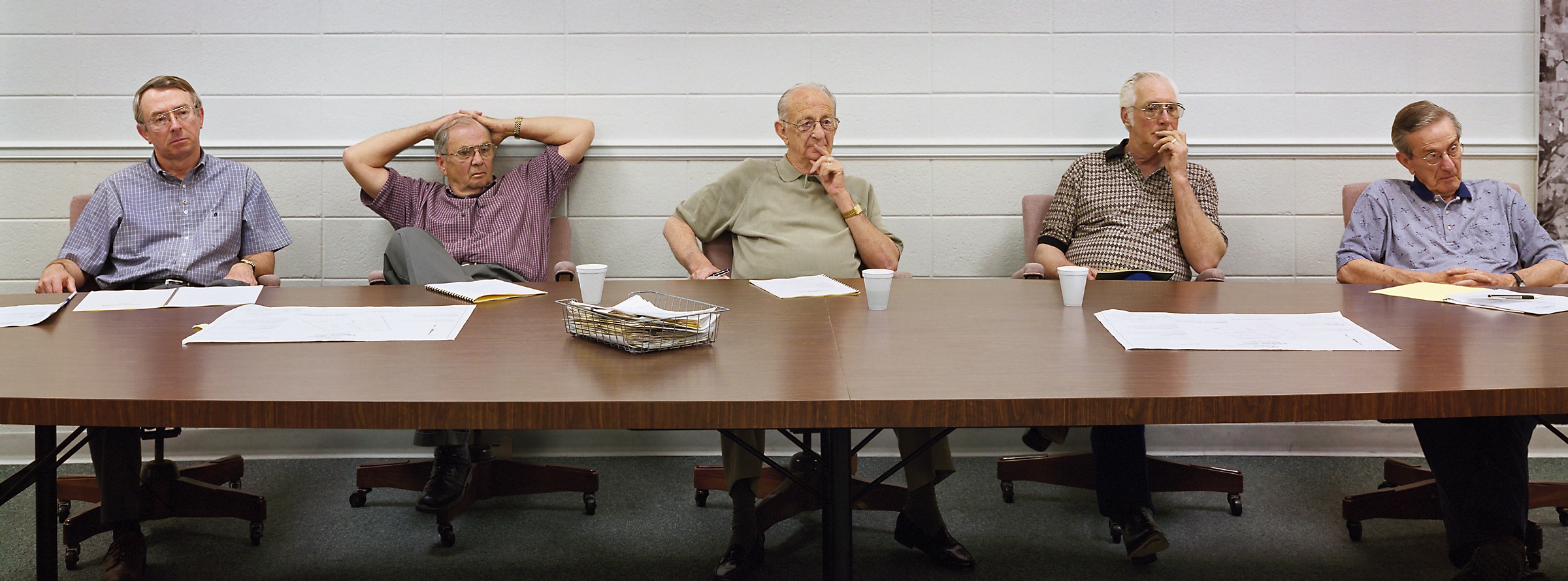Meetings
“But the township, at the center of ordinary relations of life, serves as a field for the desire of public esteem, the want of exciting interest, and the taste for authority and popularity…”
Alexis De Tocqueville, Democracy in America, 1835
My photographs of government meetings are part of my long-term investigation of power begun in previous series on nuclear weapons, factories and corporate offices, and currently on homeland security training and preparation.
A common impulse in these projects is my quest as one individual to understand and illuminate seemingly overwhelming and abstract power systems. Although town council and community meetings are open to the public, the process of governance can still seem somewhat invisible and separate from the lives of ordinary people (as evidenced by the fact that many of the meetings I photographed were sparsely attended.)
These photographs emphasize the theatrical aspects of meetings: There is a "cast", a "set", an "audience" (sometimes) and a "program" (the agenda). Seating arrangements, clothing and body language all provide clues to local cultural traits and political dynamics. The subjects play dual roles as private individuals and (sometimes reluctant) public leaders. Power may be relative, but the mayor of a town of 200 has much in common with the President of the United States. We see ourselves reflected (either positively or negatively) in our leaders, exemplifying both the highest ideals and lowest depths of the human spirit. Our reactions to them help define our perceptions of our own place in society, as insiders or outsiders, haves or have-nots
This work was a departure from my earlier series both in presentation and compositional approach. I began with conventional photographic methods, but then digitally scanned and manipulated the images’ tonality and sharpness. By utilizing conventions such as eye-level-centered compositions and panoramic formats, I placed this work squarely in the traditions of historical portrait genres. The large-scale prints on canvas are stretched and varnished to further these references and probe the boundaries between photography and painting.
My photographic road trips were inspired by the traditions of Robert Frank and Walker Evans, but the methodology was decidedly twenty-first-century. Using a laptop computer, mapping software and a database of more than 15,000 communities in over thirty states, I planned my daily itineraries according to geography, population and meeting schedules. After driving several hundred back-road miles I pulled up to the town meeting hall and there had the privilege of seeing democracy in its purest form as farmers, teachers and insurance agents conducted the business of their community. In a time in which there is talk of “exporting democracy” it seems especially pertinent to look at the often imperfect and sometimes beautiful way in which we practice this form of government at home in America.





















